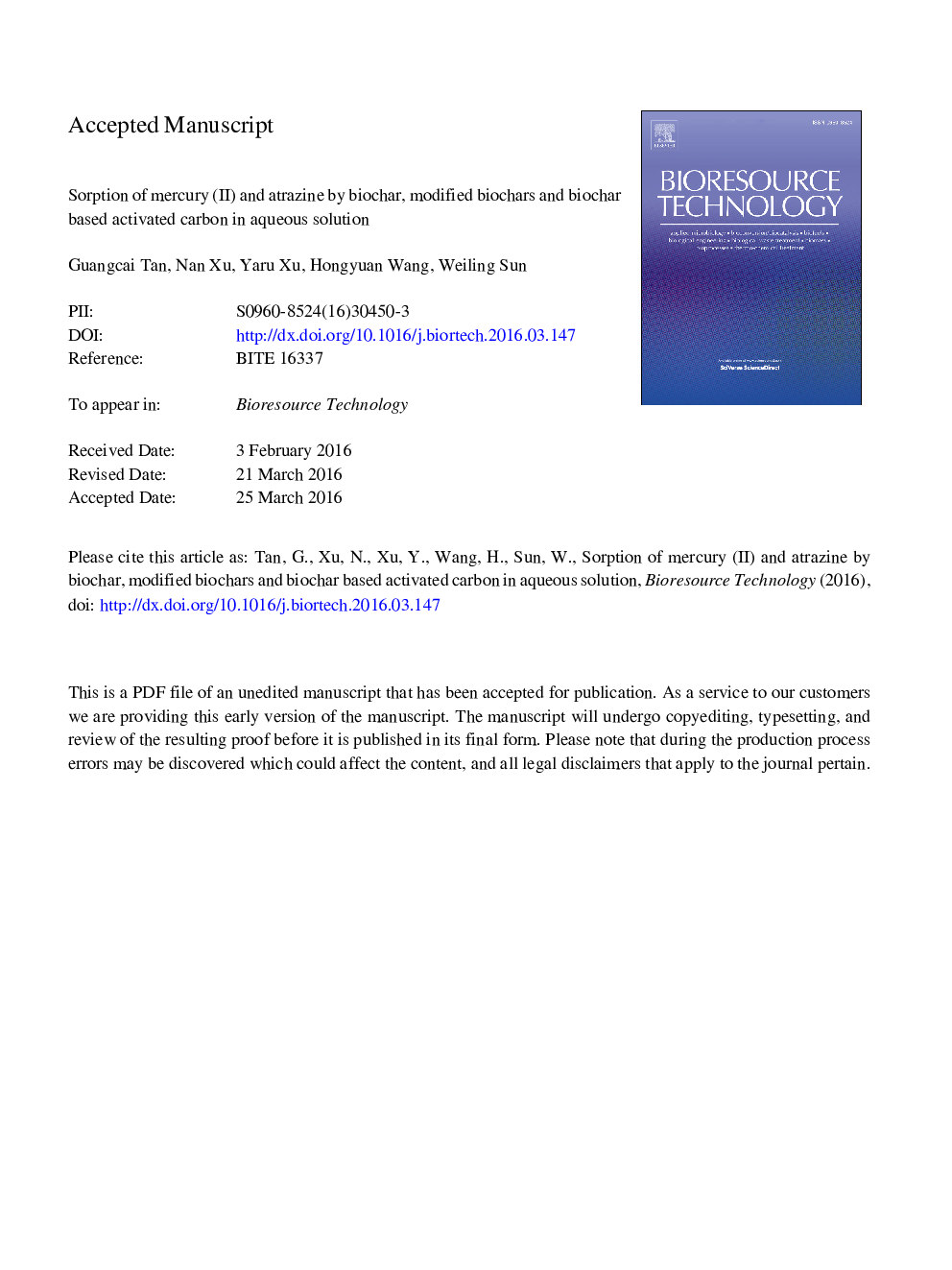| Article ID | Journal | Published Year | Pages | File Type |
|---|---|---|---|---|
| 7071674 | Bioresource Technology | 2016 | 43 Pages |
Abstract
Corn straw biochar (BC) was used as a precursor to produce Na2S modified biochar (BS), KOH modified biochar (BK) and activated carbon (AC). Experiments were conducted to compare the sorption capacity of these sorbents for aqueous Hg (II) and atrazine existed alone or as a mixture. In comparison to BC, the sorption capacity of BS, BK and AC for single Hg (II) increased by 76.95%, 32.12% and 41.72%, while that for atrazine increased by 38.66%, 46.39% and 47 times, respectively. When Hg (II) and atrazine coexisted in an aqueous solution, competitive sorption was observed on all these sorbents. Sulfur impregnation was an efficient way to enhance the Hg (II) removal due to the formation of HgS precipitate, and oxygen-containing functional groups on the sorbents also contributed to Hg (II) sorption. Activated carbon was the best sorbent for atrazine removal because of its extremely high specific surface area.
Related Topics
Physical Sciences and Engineering
Chemical Engineering
Process Chemistry and Technology
Authors
Guangcai Tan, Weiling Sun, Yaru Xu, Hongyuan Wang, Nan Xu,
